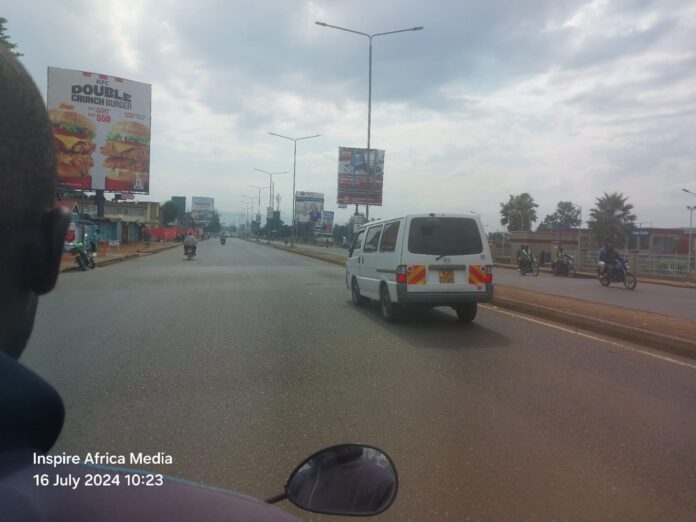Deserted streets, closed shops, and lifeless market canters are just but a few ways to describe Kenyan major towns, as crowds of youth gather to send one message to the world : RUTO MUST GO. Ruto, the incumbent president of the Republic of Kenya, is being accused by his citizens of failing to deliver on a number of his campaign promises, which were to make the country safer and better for all to prosper, regardless of their backgrounds or social status.
Among his key promises was a definitive end to extra-judicial killings, arbitrary arrests, forced disappearances, police brutality, and autonomous law enforcement bodies.
It is, however, 2024, two years since his ascension to power, but his approach to leadership has, according to Kenyans, left a lot to be desired thus far.
This has led agitated youth population to the streets since the month of June, in the sub rosa an infamous finance bill that sought to widen the tax base, by introducing new taxes including motor vehicle tax and an increased road maintenance levy.
The 25th of June became a day to remember for the nation, after for the very first time ever, citizens breached parliament buildings in an attempt to stop Members of National Assembly from passing the bill, which allegedly was imposed on the country by the IMF, to counter Kenya’s worsening debt crisis.
During the pickets, a number of protesters were shot dead by plain clothed police officers, some of whom wore balaclavas, as if to hide their identities from members of the public,as a way to protect themselves from any resulting popular hate.
In total, 41 people had been previously reported dead by a number of human rights bodies, while 321 injured and additional 627 arrested or abducted as of July 5, 2024. According to the government, however, only 20 people died, while those arrested were “goons and dangerous criminals who hijacked and infiltrated peaceful demonstrations.”
In the week running up to July 16th, the country was relatively peaceful, with the president having dropped the finance bill and dissolved cabinet. However, the discovery of ten putrefying human bodies wrapped in sacks triggered public anger, which informed the mobilization for a fresh wave of antigovernmental protests.
Since the damning discoveries of Friday, 12th July, citizens from all walks of life have aired their conflicting opinions, with a number, including the first lady calling an end to violence against women. Joining in her tune is the Directorate of Criminal Investigations DCI, who allegedly arrested a ‘self-confessed’ perpetrator of the heinous acts, declaring to have killed around 42 women in a span of two years, dumped them at the deserted quarry in Mukuru Kwa Njenga slums in Nairobi. In a statement posted on their official social media handles, DCI boss Mohamed Amin indicates that the suspect was in possession of material that might have been confiscated from his victims, the first of whom was his own wife. Multiple sim cards, female underwear, multiple phones, and among others a machete were allegedly recovered from his house in Kayole.
Nonetheless, the arrest spurred more anger from citizens, who now claim that it is a cover -up to an alleged massacre in Githurai on the night of 25th June 2024. A lot of questions have been raised, and to the dismay of many, preliminary postmortem tests show that some of the dead bodies had traces of Colgate around their eyes. Colgate, according to information in the public domain, was their protection from the effects of teargas lobbed at them at the height of protests.
More calls continue to come from human rights bodies for the Kenya Kwanza administration to protect peaceful demonstrators and stop the ongoing human rights violation, while inter- governmental organizations , Including IMF have issued statements calling for amicable solutions to the situation in Kenya.
Will Ruto listen to his citizens and resign? Will he find a favorable solution for all or will he cling to power regardless of his people’s cries?




![Dr. Maya Pradeep ; The paragon of resilience [Part II]](https://citybitemagazine.com/wp-content/uploads/2024/08/FB_IMG_1722944024179-218x150.jpg)






